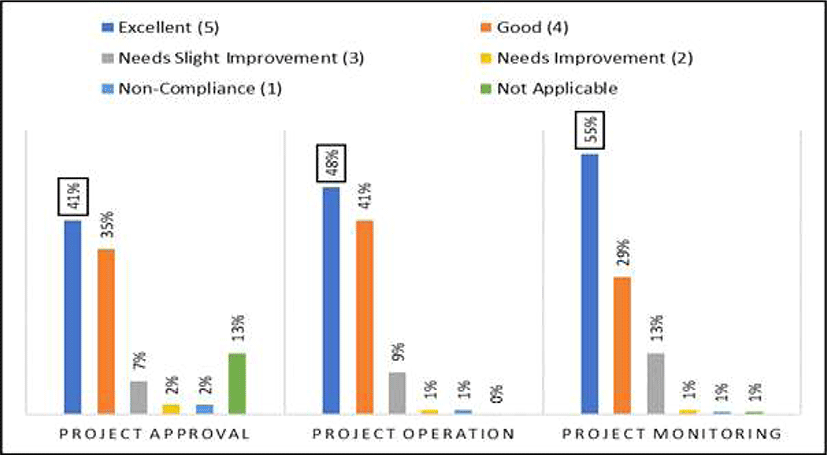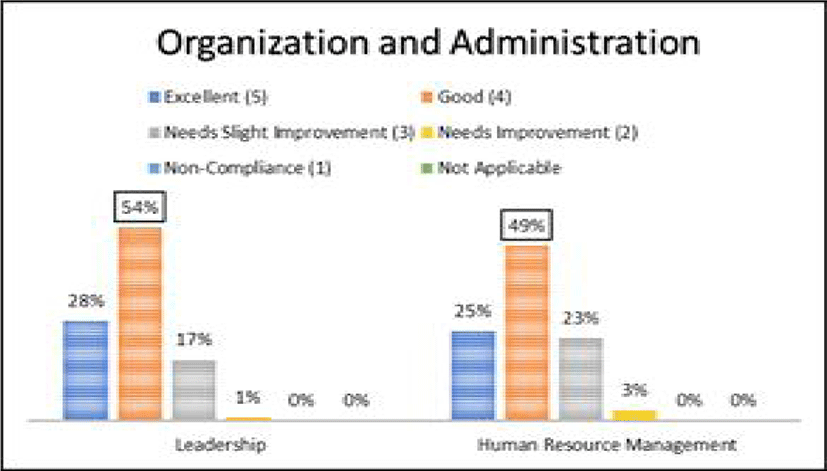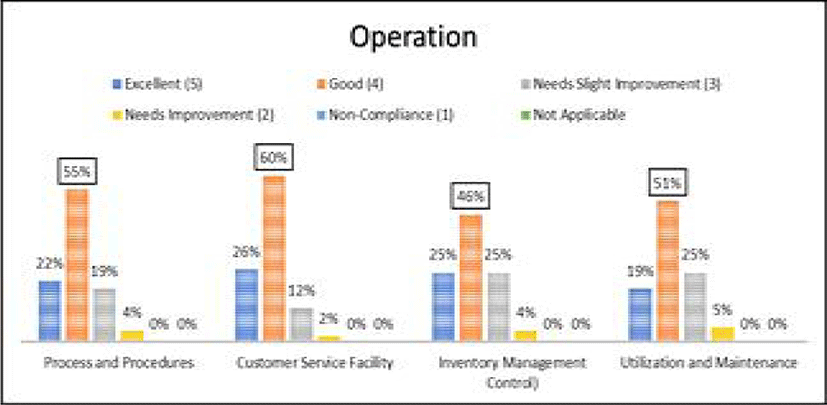I. INTRODUCTION
Official Development Assistance (ODA) is an aid which aims to promote the economic development and welfare of developing countries by providing grants or loans for improvement. The assistance includes financial and technical support given directly to the local governments of developing countries or international organizations. One important evidence that foreign aid was significant was during the period from 1945 through the 1950s, when one of the poorest nations in the world, Korea, was able to take a giant leap forward in economic development. Even while Korea was still receiving assistance from the international community in the 1960s, the country was, in fact, at the same time, also playing a role as a donor. The Korean government began to carry out ODA using its own funds and continued to expand its ODA budget. In 1991, the Korea International Cooperation Agency (KOICA) was established under the Ministry of Foreign Affairs, dedicated to delivering grants to developing countries like the Philippines (Korea Bulletin, 2009a).
The importance and development potential of ODA in the agriculture sector has reemerged as a major issue due to the direct connection of the first Millennial Development Goals (MDG) with the development of agriculture and farming communities and the changing paradigm in the agriculture sector, from a material-based approach to an overall shift in the value chain (productivity increase based on efficiency and sustainability, improved market accessibility). For this reason, the KOICA has also designated agriculture, forestry, and fisheries as a core aid theme and designated five major strategic goals in accordance with its Mid-Term Strategy (2013–2015) to conduct projects in the poorest countries (KOICA Annual Report, 2013).
KOICA plays a pivotal role in carrying out the Korean government’s ODA programs. It is continuously working in every major area of development to support the developing countries in Asia, like the Philippines. KOICA is supporting the achievement of various sustainable development goals, specifically supporting the increase in agricultural productivity and the expansion of the value chain by establishing the basis for agricultural production, disseminating agricultural technologies, and strengthening the marketability of agriculture (KOICA Annual Report, 2019).
The agency also conducted various projects in developing countries to improve the productivity and market accessibility of the agriculture and fishing sectors, including aid for product processing, improvement of distribution networks, revitalization of marketing, and strengthened export potential. KOICA provided support to four countries, including the Philippines, in terms of the processing, storage, distribution, and marketing of agricultural products to minimize postharvest losses, which in turn required income stability and strengthened food security (KOICA Annual Report, 2013).
The Philippines, as one of the countries in Asia, recognizes postharvest problems in the rice industry. For this reason, the Government of the Philippines through the Department of Agriculture (DA), together with the Republic of Korea through the KOICA, and selected Local Government Units (LGUs), partnered together to establish the Four Modern and Integrated Rice Processing Complexes (KOICA RPCs), a complete project package that was given directly to the Farmer Organizations (FOs; PHilMech, 2016).
The project was implemented in 2009. However, from preparation to implementation, the implementers, composed of public officials from the government sector1) and operators2), experienced some delays due to the operating capital, suitability of machineries and equipment, selection FOs and others.
This evaluation study focused on public officials’ and operators’ perceptions of the implementation of the four KOICA RPCs in the Philippines. Every person or group can have different perceptions when it comes to the preparation, operation, monitoring and evaluation of the KOICA RPC project. Therefore, the members of the implementers (public officials and operators) should understand each other deeply by sharing each other’s perceptions on the same issues (project approval/ management, project operation/implementation, and project monitoring/ evaluation) for their better cooperation in order to achieve the project objectives (Kim, 2021). The implementers (both public officials and operators) should have proper coordination and cooperation and should be on the same page in order for the project to be successful and sustainable. Any differences in perceptions or insights need to be specified and discussed immediately to achieve the best project performance from the RPCs.
This study is the first academic approach to determine the perceptions of the implementers (public officials and operators) towards the four KOICA RPC projects in the Philippines. The researcher studied the different perceptions between the public officials (Central and Regional Offices, Attached Bureaus/Agencies and LGUs) who are responsible during the preparation of the project (selection of the project sites, selection of the FOs and others), project approval, project implementation and monitoring/evaluation of the project. This study also investigated the perceptions of the RPC operators (Management Board/Team and other staff) who are responsible for the entire management and operation of the project.
This study will also identify the appropriateness of the process and procedures conducted by the implementers in compliance with the Rice Processing Complex Operational Guidelines and Policies of the project. Next, it will determine the significant difference in the operational performance of the four KOICA RPCs in the country. Lastly, this evaluation study will help the donor (KOICA) to know and appreciate the status and performance of the project and to ensure efficient and effective cooperation by understanding the different perceptions of the implementers (public officials and operators) of the KOICA RPCs.
II. LITERATURE REVIEW
The Korean Government, through the Minister of Agriculture, Food, and Rural Affairs (MAFRA), formulates policy on the rice processing industry (MAFRA, 2013) in order to enhance the rice processing industry’s business and competitiveness, promote investment in the rice processing industry, and improve the rice distribution structure, enhance rice quality, and stabilize rice price. Based on the acts, the government will provide capital support (both loans and subsidies) to the rice processing industry operated by private companies or agriculture cooperatives (managing the RPC from production to marketing of the produce). The rice processing industry in Korea is done by the RPC, which has introduced high technology to the production process (Rachmat et al., 2019).
KOICA, has been making efforts to maximize the effectiveness of the nation’s aid programs for developing countries. As part of the assistance of KOICA to the Philippines, the agency partnered with the government of the Philippines to establish four RPCs in the country. This project aims to develop the agriculture sector, help Filipino farmers, and reduce poverty in the area. The state-of-the-art facilities are equipped with the latest processors, which are expected to spread the Korean cultural wave in the areas and to support the Southeast Asian country in developing its agricultural industry (Kim, 2009).
The Philippines is considered as one of KOICA’s priority countries in development assistance. For this reason, the Korean Government, through KOICA, conveyed its cooperation to produce more RPCs in other key rice producing provinces (Pangasinan, Iloilo, Bohol and Davao del Sur) in the country. Inspired by the positive feedback and immense impact of KOICA’s RPC (Phase 1) in Baler, Aurora, and as a response to achieving rice self-sufficiency, the Government of Korea pledged the establishment of the four Modern Rice Processing Complexes-Phase 2. The Phase 2 project will increase farmers’ income, assure drying capability during inclement weather conditions, produce good quality milled rice, and ensure food security in the country. The establishment of this project is also a way of showing the Korean Government’s continuous and firm commitment to share its development experiences and technical expertise in agriculture to the Philippines (Korea Bulletin, 2009b).
As per agreement, the KOICA RPC beneficiary (farmers’ organization) must contribute PhP20 million and PhP2 million, respectively, as project working capital. However, this is inadequate relative to the design capacities of the RPCs, which can service 1,000 hectares of production area. About PhP80 million is needed as capital to operate at full capacity. Aside from the hindrances related to the lack of working capital, other problems identified were in the operational aspect, such as the non-preparedness of recipient FOs. Furthermore, some RPCs are unprofitable due to management issues, a lack of proper oversight, and local politics, such as delays in operational turnover to recipient FOs caused by LGUs’ desire to have a greater role in RPC operations, which contradicts the original project concept (PIDS3))), 2015). In addition, software factors, such as managerial capabilities necessary for RPC operation, are judged to be not satisfactory. It seems that building a farm mechanization system is an inappropriate objective for this project, either because the characteristics of farm machinery provided do not fit well with local farming traditions or because the number of machineries provided was not sufficient to achieve the desired result.
Regardless of these limitations, KOICA RPCs were still able to reduce quality and physical postharvest losses in rice by improving the milling recovery (from 60% to 67.5%) representing the increase in quantity of milled rice. It also increases farmers’ income by offering higher buying prices, thereby serving as an incentive to farmers to patronize the modern facility. It also provided a safety net for farmers during periods of oversupply (wet season harvest), when private traders do not accept wet paddy or offer very low buying prices (<Table 1>).
Overall, the KOICA RPCs were found to have a positive impact on addressing postharvest losses and improving the marketing system for rice and high-value crops (PIDS, 2015). This project also helps the implementers, especially in policy aspects pertaining to the stabilization of rice prices, improving the quality of rice, and traditional rice trading practices. The RPC products, locally known as “KOICA rice”, are perceived as high-quality rice, which contributes to improving the image of Korea as well as KOICA (Kim, 2009).
The DA conducted viability assessments and pre-feasibility studies to determine if and how Public-Private Partnerships (PPPs) can be carried out to ensure the optimized functions of the RPCs for the benefit of farmers and the rice-consuming public. The study shows that there is no straightforward approach that can be implemented for the implementation of the RPCs’ operations. Also, there were several areas identified where the private sector could have a substantial impact on the workings of the RPC – in its capital buildup, operations, maintenance, and marketing activities. Involving the private sector in the implementation of RPC activities is one of the many approaches to be considered to further improve the operations and management situation of the project (DA-PDS, 2017).
The KOICA RPC project is a Phase 2 (duration: October 2009 to December 2012) project from the Republic of Korea through KOICA. The agency provided a total grant amounting to US $13 million (PhP649-M), PhP136.45 million (Government of the Philippines), PhP20 million per site (RPC) as working capital and PhP2 million counterpart fund from FOs as additional operating capital (DA-SPCMAD, 2019; <Figure 1>, <Table 2>).
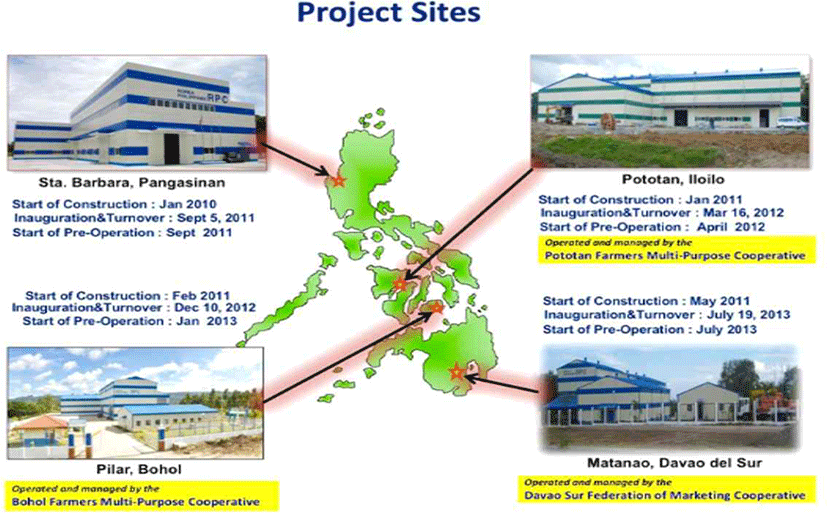
The Rice Processing Centers have identical technical and performance standards and specifications as per the design of KOICA. Essentially, the RPCs are capable of servicing 1,000 ha of production area and can produce 6,591.8 tons of milled rice annually at full capacity. The project has modern machinery composed of an input hopper (20 tons/hr), a dryer (combined kerosene-rice hull fueled; a total of 5 units capable of processing 10 tons per batch), a miller (capable of 3.5 tons/hr straight milling and 2.5 tons/hr for graded milling) and a fully equipped grain sorter (DA-PDS, 2017; <Table 3>).
III. RESEARCH METHODOLOGY
Both methods of qualitative and quantitative approaches were adopted in this evaluation study. The primary and secondary data were used to determine the implementers’ perception of the RPCs.
A total of fifty (50) respondents were selected purposively based on the following criteria: willingness to participate in the survey/interview, awareness, familiarization, and knowledge experiences in operating the KOICA RPCs. Out of the 50 respondents, twenty (20) are public officials from the government sector in the Philippines, those who were in-charge during the planning up to monitoring and evaluation stages of the KOICA RPC project. The remaining thirty (30) respondents are the operators from the Management Board/Team and employees composed of at least eight staff per RPC. These are the General Manager, Plant Manager, Plant Engineer, Procurement Officer, Accountant, Marketing Officer and others. The project implementer from the government sector and the General Manager per RPC were both respondents in the survey and interview to properly process and analyze the result of the study.
The evaluation study was conducted during the COVID-19 pandemic. Therefore, the researcher collected data via email, video conferencing through Zoom, Facebook, Google Meet, or other forms of communication. A series of video conferences were conducted to solicit insights and immediate information from respondents.
Due to the COVID situation in the country, the availability of the respondents and the internet connection in the area became a problem, especially during the data gathering phase. However, the researcher still managed to collect reliable data despite the limitations encountered.
IV. RESULTS AND DISCUSSION
There were two (2) sets of questionnaires (for public officials and operators) administered in this evaluation study. Data gathering was conducted for two months (May-June 2021). The survey forms were sent and collected through the electronic mail and Facebook accounts of the selected respondents located in the three major islands of the Philippines (Luzon, Visayas and Mindanao).
There were twenty (20) valid responses from the public officials (government sector: DA Central and Regional Offices, Attached Bureaus/Agencies, and LGUs where the project sites are located) who handled the project from preparation to monitoring and evaluation. Another thirty (30) valid responses were collected from the operators (Management Board/Team and other employees) who manage the entire operation of the RPCs (<Table 4>).
The questionnaire for public officials was divided into three (3) parts. The first part was about the project approval and management, followed by the project operation/implementation and the last one was about the project monitoring and evaluation. The respondents will rate (5 – Excellent, 4 – Good, 3 – Needs Slight Improvement, 2 – Needs Improvement and 1 – Non-Compliance) the questions to check the level of compliance per category and to determine the issues, concerns and other interventions identified during the planning up to the monitoring and evaluation stages of the project.
The illustration below shows that the majority of public officials from the government sector perceived that the implementation of the KOICA RPCs was excellent in terms of project approval (41%), project operation (48%) and project monitoring and evaluation (55%). The implementers from the government sector created and followed the RPC Operational Guidelines and Policies, conducted a series of consultations and orientations, and monitored and evaluated the implementation of the RPCs in order to achieve their objectives. However, based on the respondents’ observations, there were certain areas that needed slight improvement to ensure the effective operation and implementation of the RPCs. The implementers perceive that a thorough and detailed selection process towards the selection of project sites and FOs is important in order to avoid any delays in the project’s implementation (just like what happened to the Pangasinan RPC wherein the operation was stopped since the operator/FO withdraw to manage and operate the project). It was also noticed that active participation or interaction between the stakeholders who are involved in the project is vital to avoid any misunderstanding before, during and after the implementation. The respondents also realized that additional financial (operating capital), technical and administrative assistance are necessary for the smooth operation of the project. Lastly, the implementers noted that proper planning regarding the suitability and availability of machinery and equipment is important to avoid any delays in the overall operation and implementation of the project (<Figure 2>, <Table 5–7>).
The survey form for the operators (Management Board/Team and other employees) was divided into five (5) parts. The first part was about the organization and administration, which focused on evaluating the human resources policies and management systems and processes of KOICA RPCs. Next, the operation of the project, which looks into the key components of the operations of KOICA RPCs from the processes and procedures, use of facilities and equipment, and adoption of technologies. Third, financial management, which will check on the execution of the financial management system in place and assess the awareness level of the project staff and employees. Fourth, the marketing aspect of the project, which focuses on the systemic flow of goods and products within marketing and trading activities and determines compliance with the set guidelines and protocols. Lastly, the sustainability aspect, which will cover the growth potential (in terms of production, product, technology, market, network, and measures to identify and mitigate risks) of the KOICA RPC.
The majority of the KOICA RPC operators (Management Board/Team and other employees) perceived that the project was properly implemented. Most of the respondents (General Manager, Plant Manager, Plant Engineer, Procurement Officer, Marketing Officer, Accountant, Bookkeeper, Admin Officer, Warehouse Officer, Milling and Drying Operator and others) provided a good rating in terms of the RPCs Organization and Administration (Leadership-54% and Human Resource Management-49%), Operation (Process and Procedures-55%, Custom Service Facility-60%, Inventory Management Control-46% and Utilization and Maintenance-51%), Financial Management (47%), and Marketing (48%). The RPC operators adopted the operational guidelines of the project. They have a clear view of the plans, programs, and priorities of the RPCs. The operators also conducted proper selection and appointment of officers or staff to ensure the smooth flow of the operations. They are also aware of the process and procedures of the project. They know that the RPCs have adequate and well-maintained facilities equipped with modern machinery and equipment. It was also identified that the project established a simple financial management system and has available facilities for logistics and distribution of the products.
However, this evaluation study also recognized that there are areas that need improvement in order to sustain the operation of the KOICA RPCs. A majority (47%) of the operators identified that the management should revisit and improve the sustainability plan (including social, market, technological, climate, and political risk, among others) of the project. Second, most of the operators noted that one of the major concerns causing delays in the operation of the RPC is the availability of supplies of machineries and equipment spare parts in the local market. It was also observed that there was a need to strengthen the human resource management of the project since most of the staff or employees who attended capability training had already transferred to other companies or been replaced by new ones. The operators also perceive that training (regarding the latest technology in quality control systems, financial management systems, digital marketing, and others) for the old and new staff is necessary in order to be fully aware of the entire operation and management of the RPCs.
Lastly, the operators identified that additional financial (operating capital), technical and administrative assistance are vital for the sustainability of the KOICA RPCs (<Figure 3-5>, <Table 8–16>).
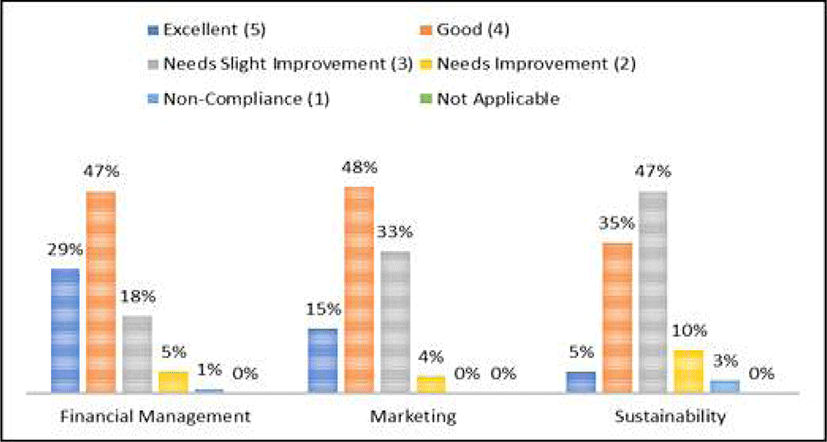
V. DISCUSSION
The purpose of this evaluation study was to determine the perceptions of public officials (from the government sector) and the operators (KOICA Management Board/Team and other employees/staff) towards the implementation of the four KOICA RPCs in the Philippines. The researcher investigated the various insights of project implementers (public officials) on project approval, project operation, and project monitoring and evaluation of the RPCs. The researcher also examined the diverse observation of the operators (Management Board/Team and other employees) on the organization and administration, operation, financial, marketing and sustainability of the project. Based on the result of the study, it shows that the implementers, both public officials and operators, properly implemented and operated the project by following the RPC Operational Guidelines and Policies. The majority of the respondents are fully aware and understand the entire operation and management of the KOICA RPCs in the country. It was noted that the implementers from the government sector conducted an assessment and evaluation before the project started. They also conducted a series of orientations and consultations with all stakeholders before and during the implementation.
However, during the monitoring and evaluation, it was found that there was a need for additional financial, technical, and administrative support in order for the project to become profitable and sustainable. As a result, this evaluation study shows the strength and weaknesses of project implementation, which will help the implementers (both public officials and operators) to better understand the project and take the necessary actions to achieve the best performance of KOICA RPCs in the country.
VI. CONCLUSION
This study evaluates how the public officials and operators (management board/team and other employees/staff) in the Philippines perceived the implementation of the four modern KOICA RPCs. Based on this study, the project performed well and was properly implemented due to the full support of the government (Republic of Korea through KOICA and Republic of the Philippines through DA and LGU), farmers’ association/cooperative, and people in the community. This study, however, identified the limiting factors affecting the project’s operation and sustainability, which should be addressed by the project’s implementers.
One of the identified limiting factors was the selection of a responsible, dedicated, and qualified beneficiary (association/cooperative). It was determined that the Pangasinan RPC stopped their operation due to the withdrawal of the selected cooperative after a few months of operation, resulting in the closure of the RPC for so long while they looked for another qualified group that could manage the project. It was also discovered that some of the trained technical staff (trained by KOICA and PHilMech experts) resigned and transferred to other companies without giving proper notice or turnover to management. Another issue identified was a lack of technical experts (locally) to repair, restore, and maintain the machinery and equipment used in the project’s operation. The main issues identified that had a significant impact on the project’s overall operation and performance were a lack of local suppliers for machinery and equipment, as well as the fact that some spare parts had already been phased out of the market (local and international). Lastly, additional operating capital is required because the working capital worth PhP20 million was not fully provided due to the abolition of the National Agribusiness Corporation (NABCOR).
Based on the perceptions and observations of the public officials and operators who implemented and managed the project, it was determined that the RPC Operational Guidelines and Policies should be reviewed, revisited, and improved in order to address the various areas that require improvement (from project approval to project operation, and monitoring and evaluation of the RPCs).
Furthermore, the findings of this study can be used in the future by project implementers to conduct follow-up project evaluations. Finally, this research will help in encouraging active participation and improving relationships among project stakeholders, resulting in stronger, more efficient, and successful future collaboration and partnership.

